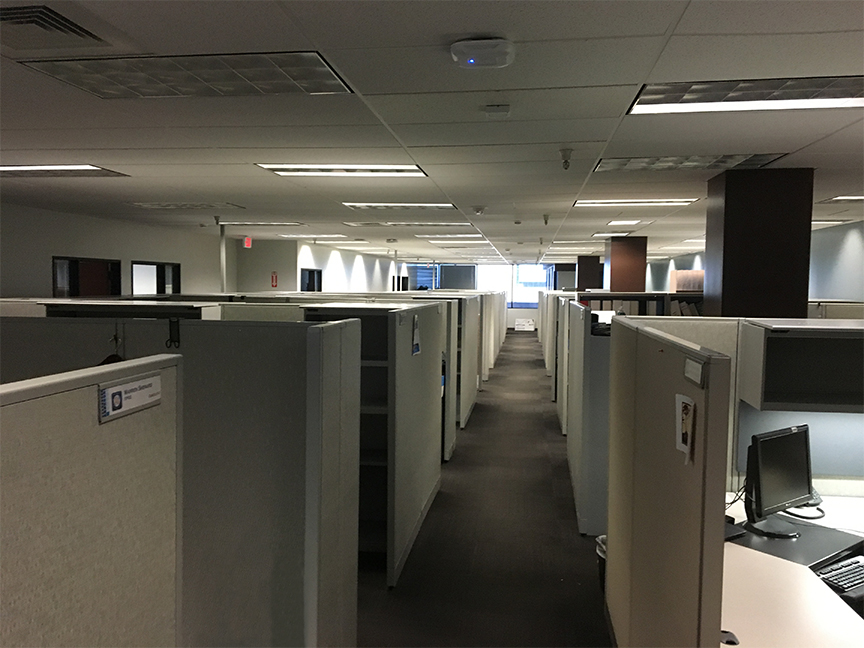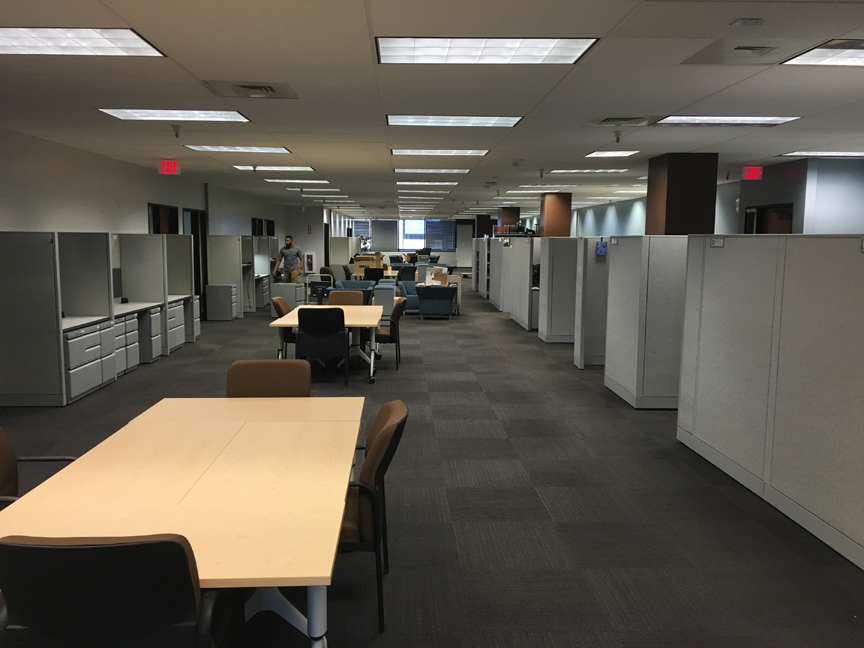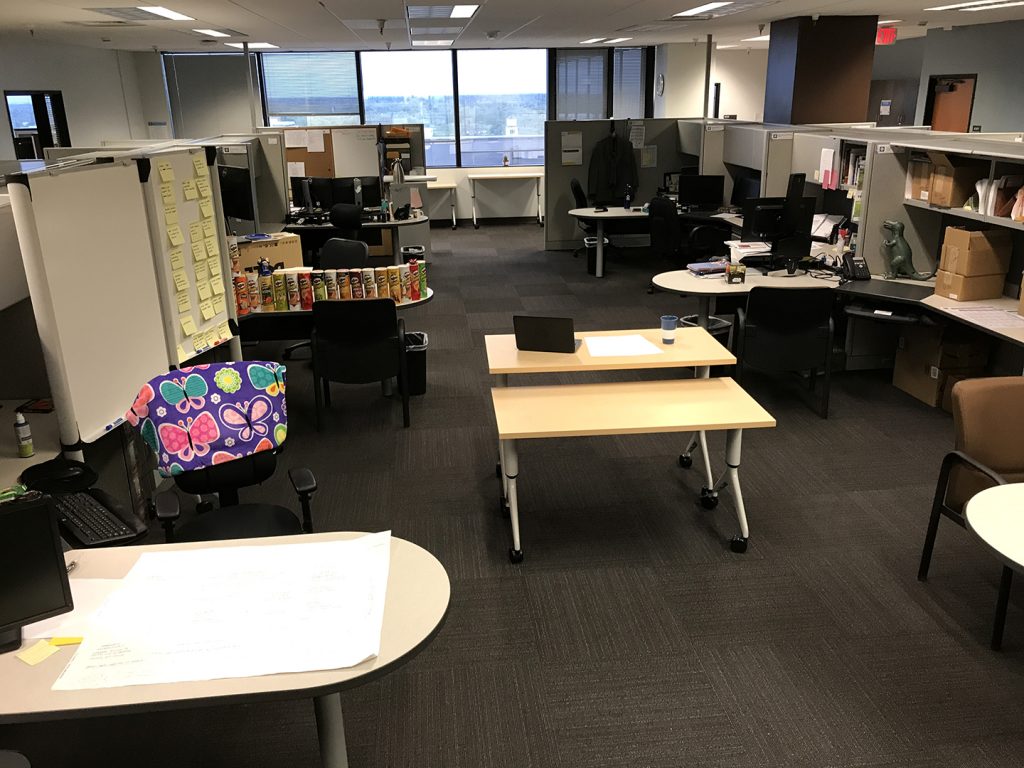Based on survey results and other feedback, we will improve upon this Alpha version for a Beta.
3.6.1 Creating an Agile Working Environment
Agile teams succeed when they are in a flexible and productive team environment. Having a central place to communicate, manage your work, and collaborate with the team is an essential component to the success of an agile project.
Things move quickly in agile, so teams need easy ways to coordinate their activities, communicate progress and collaborate. The physical working environment should be designed to encourage agile ways of working and suitable technology to support this approach should also be leveraged.
Decide What is Needed from the Environment
Your team’s work space is more than just a work space. It is an important tool in the success of your project. Working spaces for digital service will vary. At the beginning of a project, you should consider:
- how to structure your space
- the tools you need
Sitting Together
Ideally, your team will work from the same location and sit together or near each other. Short, informal conversations are a helpful way to make continued progress. These conversations are constrained when a team is spread across an office or in different locations. Removing dividers between desks will make a big difference and allow team conversations to flow more freely. If large monitors or other obstructions are getting in the way, it may be best to remove or move them.
Wall Space
Teams using agile approaches need ample wall space in their work area. If you cannot use a wall, use whiteboards, or other large surfaces. The wall creates a physical focus for the team so they can:
- gather round it at their daily standup
- refer to and update it throughout the day
- show the status of their work
This helps the team to:
- discuss what they’re working on
- sort out issues or problems
- talk through ideas
To learn more about setting up your wall space see “Set up a team wall.”
The Right Technology
As a team, you also need the right technology or tools to help you communicate and manage your work. Individual team members may also need access to tools to help them with their specific role. Be sure to provide the proper training on the tools that are selected to everyone who needs it.
Communication
Meetings like standups or retrospectives help people to keep in touch, but a tool for online discussions or alternative communications may also be helpful. An online tool allows the team to stay in contact and means you can:
- make quick decisions
- provide support and information
- keep everyone informed about the work you’re doing
There are many tools that allow a team to talk in a more conversational way than they would with emails. Various chat applications allow for this type of communication and many tools already have the capability built-in.
Collaboration
Using browser-based tools to collaborate and work on documents at the same time is one way for increased collaboration. This helps to avoid having multiple versions of the same document or for sending versions back and forth through email. Use productivity tools like SharePoint or other online repositories to track and store documentation.
What Does an Agile Environment Look Like?
Adopting an agile working environment is about changing your workspace to provide the right amount of flexibility for any activity in a workplace. These activities include:
- collaboration space
- team meeting space
- focus or individual working space
Short meetings are often conducted throughout each day. Walls are covered in notes or reference materials. This may seem strange in office cultures that are more used to formal meetings or conference calls. Those working in creative and technical fields often need plenty of space for focused, detailed work. It is common to see people spend most of the day with headphones on to help them focus, or deep in conversation with just one person with whom they’re pairing.
This may mean changing from a more traditional workspace shown as shown in Figure 1-1 to a more agile, collaborative, or open workspace as shown in Figures 1-2 and 1-3.
This type of workspace is more confined and does not provide much of an option for working collaboratively. Team members are siloed and the space is not flexible.
In this agile workspace there are less walls or barriers between the workstations and there are increased open spaces and areas where team members can meet and collaborate. These images represent the before and after of CDT workspaces.
The Benefits of an Agile Working Environment
When a workplace is changed to better fit how work is accomplished at an organization, teams can benefit from:
- team members being more accessible
- using available space in multiple ways
- saving space with less bulky individual workstations
- allowing for a more cohesive team working approach
- overall increased interaction
Visit an Agile Working Environment
If you’re planning to setup an agile working environment for your team, you might find it useful to go and look at how other agile organizations and teams are working. Do not be afraid to reach out to arrange a tour.
Playbook Contents
Creating an Agile Working Environment
Updated: September 22, 2017




